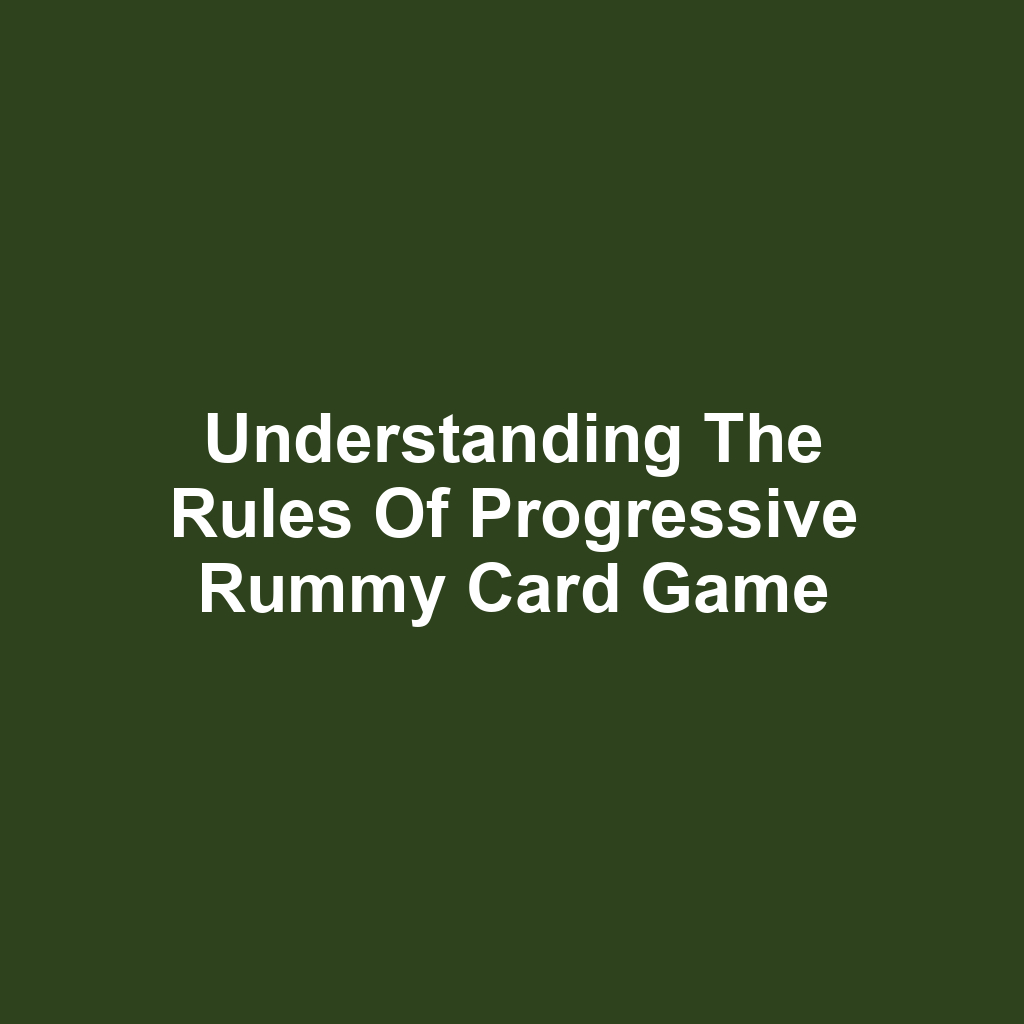In the world of card games, few are as engaging and strategic as the progressive rummy card game. Players find themselves immersed in a challenging yet enjoyable experience that requires both skill and a keen understanding of the rules. It’s not just about luck; it’s also about mastering the gameplay mechanics and developing winning strategies. As the game evolves with each round, variations can add exciting twists that keep players on their toes. This article aims to break down the essentials of progressive rummy, ensuring everyone can join in on the fun.
Game Setup and Components
The game setup for progressive rummy requires a standard deck of cards and typically involves two to six players. Players should sit in a circle to facilitate easy interaction. Each player’s dealt a specific number of cards, which can vary based on the round being played. The remaining cards form a draw pile, with the top card placed face up to start the discard pile. Players take turns drawing from either the draw pile or the discard pile. It’s important for players to keep their cards hidden from others. The objective is to form sets and runs according to the game’s rules. A round ends when a player lays down their cards, signaling that they’ve completed their sets. Players then tally their points based on the cards left in their hands.
Basic Gameplay Mechanics
Basic gameplay mechanics involve players forming sets and runs while taking turns drawing and discarding cards. Players can create sets of three or four cards of the same rank or runs of three or more consecutive cards of the same suit. Each player’s turn typically starts with drawing a card from either the deck or the discard pile. After drawing, players must decide which card to discard to maintain their hand. The objective is to meld all cards in hand through sets and runs.
Players can also lay down melds on the table during their turn if they meet the requirements. If a player successfully melds all their cards, they can declare "Rummy," which often results in bonus points. Game rounds continue until a player reaches the agreed-upon score or completes a set number of rounds. Players must keep track of their opponents’ moves to anticipate their strategies and adjust their gameplay accordingly.
Scoring and Winning Strategies
Scoring and winning strategies often determine how well a player performs in progressive rummy. Players should focus on forming valid sets and runs to maximize their points. It’s essential to keep track of the cards discarded by opponents, as it can reveal their strategies. They can also use this information to block opponents from completing their hands.
Additionally, prioritizing high-value cards can lead to higher scores if left unmelded. Players often employ bluffing techniques to mislead opponents about their true intentions. Adapting to the flow of the game is crucial, as strategies may need to shift quickly. Utilizing wild cards effectively can also create significant advantages. Ultimately, a combination of skill, observation, and strategy will enhance a player’s chances of winning.
Variations of Progressive Rummy
Variations of Progressive Rummy can introduce unique rules that change the gameplay significantly. Some versions might allow for wild cards, adding an extra layer of strategy. Other adaptations could implement different scoring systems, affecting how players prioritize their moves. Players may encounter rules where melding sequences becomes mandatory, altering the pace of the game. In certain variations, the number of cards dealt can fluctuate, leading to different hand sizes and dynamics. Some groups might choose to limit the number of rounds, increasing the urgency to score points. Additionally, variations could include the option for players to swap cards, enhancing interaction between participants. There’re formats that impose penalties for failing to meet specific meld requirements, raising the stakes. These unique rules can create fresh experiences, ensuring that each game remains engaging and unpredictable.
Tips for Enhancing Your Play
Players often find that careful observation of opponents’ discards can significantly enhance their strategy. It helps them identify which cards their opponents are pursuing or avoiding. Keeping track of the cards picked up from the discard pile can also provide valuable insights. Players should focus on forming melds quickly while remaining adaptable to changing circumstances. Timing one’s own discards is crucial, as it can prevent giving opponents an advantage.
Additionally, maintaining a balanced hand with a mix of high and low cards can create more opportunities for melds. Players often benefit from practicing their memory skills, as remembering previously discarded cards can inform future decisions. Engaging in bluffing tactics can mislead opponents, creating uncertainty about one’s own hand. Finally, regular practice and analysis of past games can reveal patterns and improve overall gameplay.
Frequently Asked Questions
What are the common mistakes players make in progressive rummy?
Players often overlook the importance of keeping track of their opponents’ discards, which can lead to missed opportunities for forming melds. They also tend to forget about the varying point values of cards when strategizing their plays, causing them to make less optimal decisions.
How do you handle disputes or disagreements during a game?
When disputes or disagreements arise during a game, it’s essential for players to pause and discuss the issue calmly. They should refer to the agreed-upon rules, and if necessary, involve a neutral party to help resolve the matter fairly.
Are there any specific etiquette rules to follow while playing progressive rummy?
When playing any card game, it’s important to maintain a respectful atmosphere, so players should avoid disruptive behavior and keep their comments friendly. Additionally, it’s generally expected that players take their turns in a timely manner to keep the game flowing smoothly.
If you’re looking to expand your knowledge beyond card games, I highly recommend visiting this fantastic read on the basics of homeschooling. It provides valuable insights that can help you navigate the educational landscape effectively. Don’t miss out on this opportunity to enrich your understanding!
